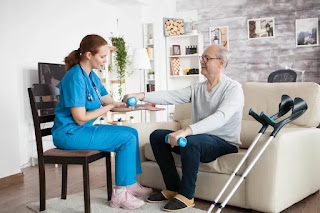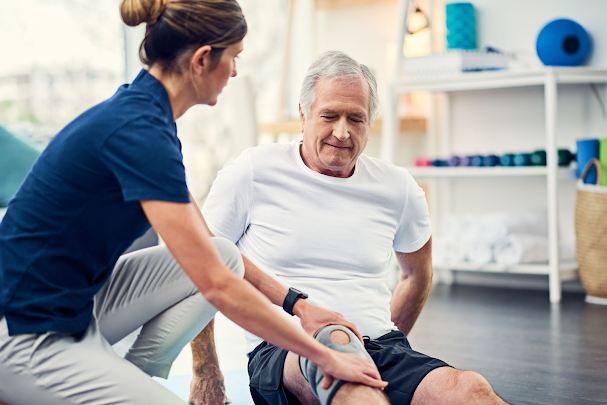Manual Therapy For Movement Restrictions, Tension, and Pain
In Physical Therapy, what is IASTM?
Physical therapists employ Instrument-Assisted Soft Tissue Mobilization (IASTM) as a sort of manual massage therapy. This sort of treatment, also known as the Graston Technique, can be effective for many patients who have movement limits, stress, or pain.
IASTM is defined by Taylor and Francis as "a skilful intervention that incorporates the use of specialised tools to manipulate the skin, myofascia, muscles, and tendons by various direct compressive stroke techniques."
What is the role of IASTM?
By targeting musculoskeletal disorders at the cellular level, instrument-assisted soft tissue mobilisation helps break down limitations, alleviate discomfort, and facilitate healing.
A facial limitation is generally the result of scar tissue and adhesions that have grown up over time. "Scar tissue and adhesions effectively function like superglue in your body," explains Ortho Bethesda. When scar tissue forms as a result of an injury, new cells are laid down in an unorganised and excessive manner. Scar tissue and adhesions inhibit muscles and other tissues from properly extending."
IASTM is a technique that physical therapists can employ to induce a natural inflammatory response through controlled microtrauma. An inflammatory response from your body sets off a chain of actions that includes the removal of extra scar tissue and fibrosis that is creating limitation.
IASTM also stimulates a vascular response that enhances healing and increases blood flow. Even the pain receptors on the skin's surface have a neurological function that controls pain.
IASTM is useful for whom?
Several disabilities and disorders can benefit from IASTM treatment. Many people undergoing orthopaedic surgery, those who spend a lot of time sitting down at work, and athletes recovering from accidents or strenuous training may find it helpful. You might receive this manual therapy from your physical therapist if you have an impairment like:
little mobility
aching while moving
reduction in motion
decreased activation of muscles
excessive development of scar tissue
Additional conditions that profit from the use of IASTM include:
a plantar fasciitis
Palmar-plantar syndrome
IT band syndrome and neck pain
Achilles Tendinitis/Heel Pain
Sprained and strained ankles
a Backache
Shaky Legs
Hip and knee replacements following surgery
Musculoskeletal Disproportions
Restrictions and Myofascial Pain from Rotator Cuff Tendinitis
Instrument-assisted soft tissue mobilisation might not be advised in several circumstances. These may consist of:
An unhealed fracture
Hematoma
Hemophilia
Intractable Hypertension
Patient with Open Wounds Is Hypersensitive
How to Prepare for and Experience an IASTM Treatment
In order to make the tissue more malleable, IASTM treatments during physical therapy sessions are sometimes combined with a warm-up such as heat, a stationary cycle, an elliptical machine, or mild running. Your therapist can use stainless steel, plastic, or titanium tools that conform to your body after a warm-up to locate the precise tissues and muscles that are inhibited.
In order to properly treat the areas causing discomfort and movement limits, instrument-assisted soft tissue mobilisation begins with mild pressure and gradually builds it up. At Balanced Physical Therapy, we value open communication and urge clients to alert therapists when pressure becomes intolerably unpleasant.
Most patients continue their workout regimen after receiving IASTM therapy in order to improve their movement patterns. Patients shouldn't panic if they have any soreness after treatments because it usually goes away and grows less intense with additional treatments. By the third or fourth appointment, if you are receiving physical therapy between two and three times a week, you should start to see results (sometimes even on the first treatment). Patients can advance through their recuperation very fast when IASTM is utilised in conjunction with exercise, stretching, and a concentrated effort on home exercises.
Give us a call to speak with a therapist if you have any questions regarding IASTM or if you are having trouble moving around because of pain, tension, or other issues. Our team is always available to assist you in making the best choice for your general health and wellbeing.





Comments
Post a Comment